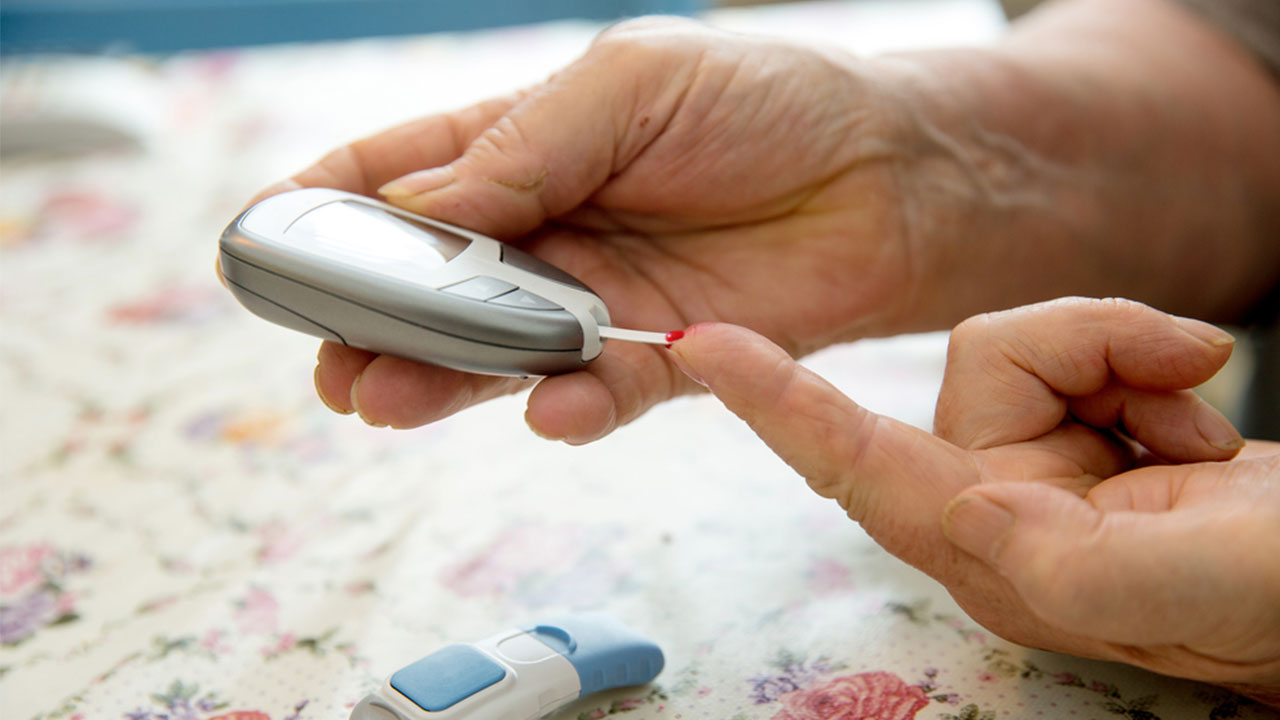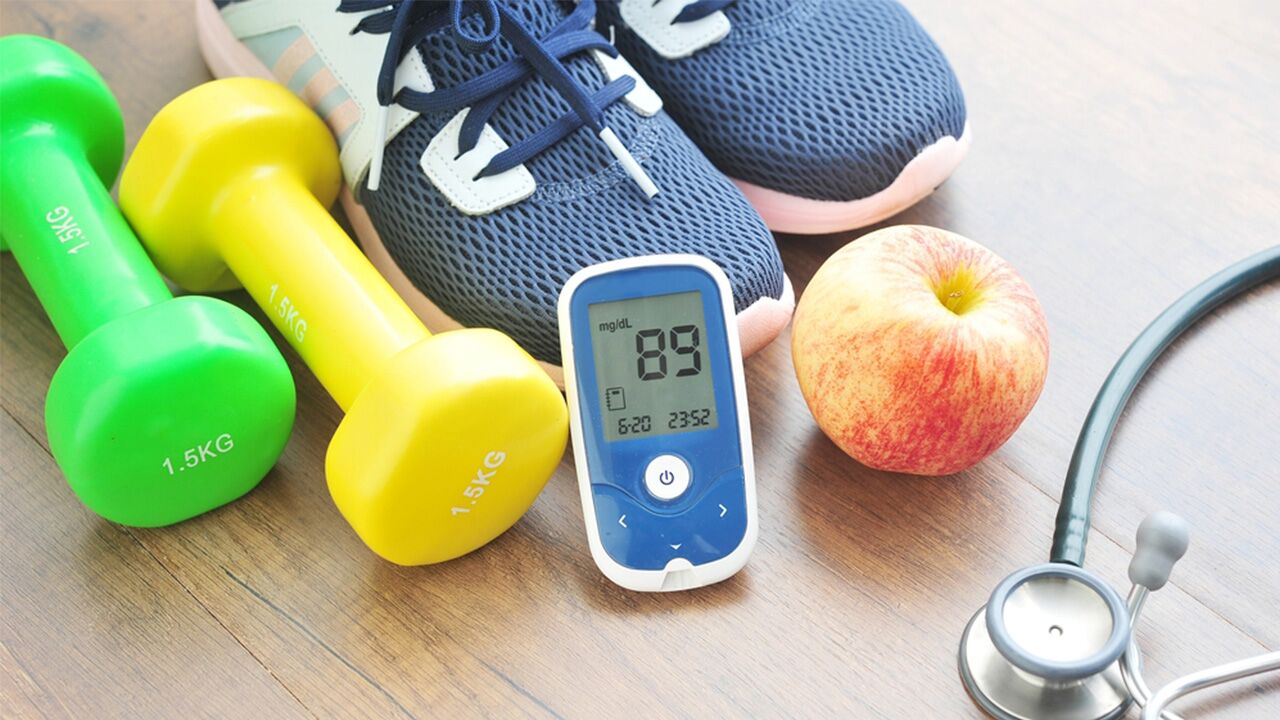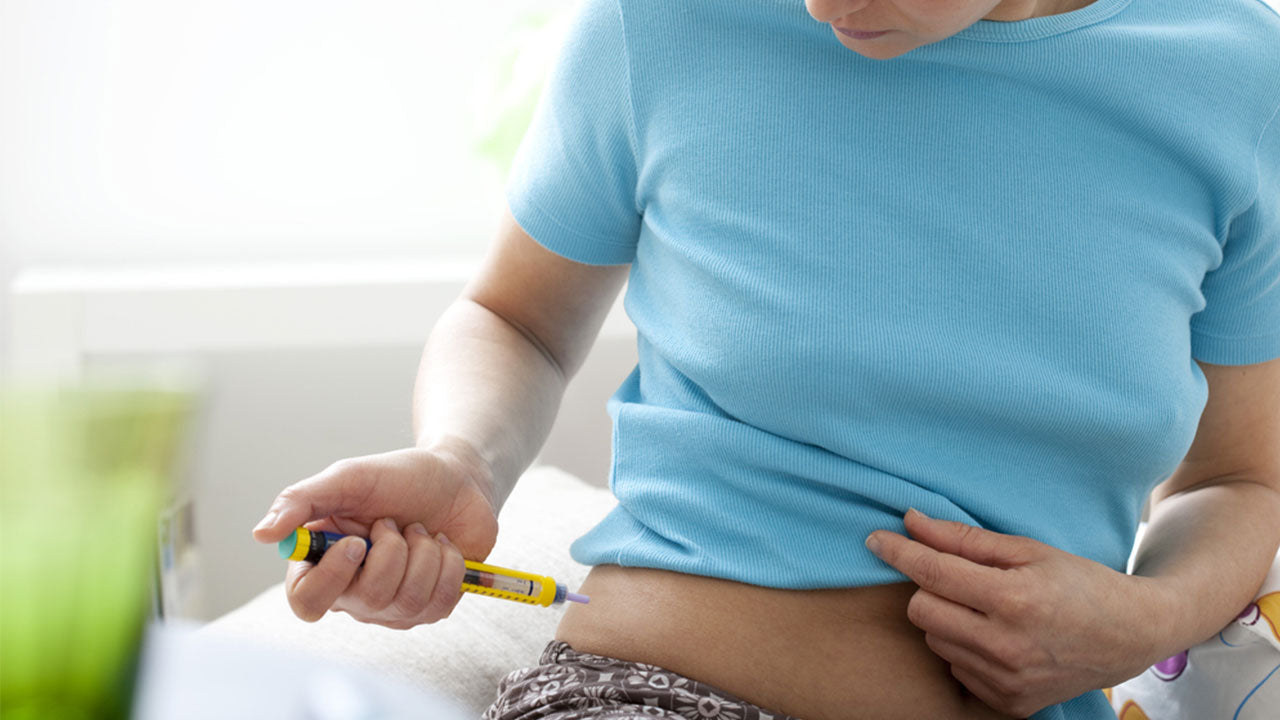Reversing Type 2 Diabetes: Natural Remedies for Diabetes Treatment and Prevention
 By: by Amino Science
By: by Amino Science

According to the Centers for Disease Control and Prevention (CDC), more than 100 million adults in the United States—one third of the population—are currently living with either diabetes or prediabetes. And the overwhelming majority of those who’ve been diagnosed with diabetes have type 2 diabetes. If left untreated, type 2 diabetes can lead to serious complications, including elevated blood pressure, heart attack, stroke, nerve damage, limb loss, blindness, kidney failure, and death. However, by making a few targeted lifestyle changes, it’s possible to avoid this fate. So come with us as we explore some of the simple but powerful techniques that can assist you in preventing or even reversing type 2 diabetes.
What Causes Type 2 Diabetes?
There are actually two types of diabetes: type 1 and type 2. Type 1 diabetes is an autoimmune disease that occurs when the immune system attacks the insulin-producing cells in the pancreas (beta cells) and destroys the ability of the pancreas to produce insulin. While only a fraction of Americans have type 1 diabetes, medical experts agree that type 2 diabetes has reached epidemic proportions.
With type 2 diabetes, the body stops using insulin properly and develops what’s called insulin resistance. Under normal circumstances, insulin helps glucose in the bloodstream enter the body’s cells. But people with type 2 diabetes have a buildup of sugar in the bloodstream instead.
Although this prompts the beta cells in the pancreas to release more insulin, the increased demand damages the cells. Eventually, the pancreas can no longer make enough insulin to keep up. And this leads to higher and higher blood glucose levels.
If these high blood sugar levels aren’t considered elevated enough to warrant a diagnosis of type 2 diabetes, a person may be said to have prediabetes. This “pre-diagnosis” is a warning that steps need to be taken to prevent progression to type 2 diabetes.
While simple lifestyle changes are usually enough to prevent the onset of type 2 diabetes, even type 2 diabetes itself can be reversed if it’s caught early enough. But if it’s allowed to advance, the disease becomes harder to control and requires both medication and insulin.
Risk Factors for Type 2 Diabetes
The number one cause of type 2 diabetes is excess weight. However, a number of other factors can predispose an individual to developing the disease as well. These include:
- Age: The risk of developing type 2 diabetes increases with age, with those over the age of 45 having the greatest risk.
- Race: Racial and ethnic minorities have a greater chance of developing type 2 diabetes.
- Family history: People with close family members with type 2 diabetes are more likely to have the condition themselves.
- Abdominal fat: People who carry most of their body fat in the abdomen are at greater risk of type 2 diabetes.
- Lack of activity: People who lead sedentary lifestyles have a higher chance of developing type 2 diabetes.
Type 2 Diabetes Symptoms
The symptoms of type 2 diabetes may develop slowly over a period of years, which can make them difficult to notice. However, some symptoms to watch out for include:
- Unexplained weight loss
- Increased hunger and thirst
- Frequent urination
- Fatigue
- Blurry vision
- Slow-healing wounds
- Acanthosis nigricans (dark, velvety skin)
Reversing Type 2 Diabetes
It may come as no great surprise, but the same techniques that help prevent type 2 diabetes can also be used to reverse the condition. And medical experts agree that the best way to reverse diabetes is through diet and exercise.
As mentioned earlier, the main risk factor for type 2 diabetes is excess weight. And a new study out of the National Institutes of Health (NIH) has found that eating ultra-processed foods—foods that have gone through multiple processes and contain large numbers of artificial ingredients—leads to both overeating and weight gain.
These findings are especially important to note, as ultra-processed foods make up the majority of foods sold in the United States, and their rise to prominence in the American diet has coincided with increased rates of obesity.
While many studies have documented the link between diet and obesity, this particular study is unique because researchers found that people eat more ultra-processed foods even when the total amount of calories matches that offered as part of a healthy diet. In fact, they found that people who are allowed to eat as much of an ultra-processed diet as they want will eat 500 calories more than people who eat a diet made up of minimally processed and whole foods.
Another clinical trial, this time the Diabetes Prevention Program Outcomes Study (DPPOS)—which was funded by the National Institute of Diabetes and Digestive and Kidney Diseases (NIDDK)—found that overweight people with prediabetes who improved their eating habits and engaged in regular physical activity were able to reduce their risk of progressing to type 2 diabetes by 58% overall. That figure jumped to 71% in people over the age of 60.
These results were found to be even better than those seen in the group taking metformin—one of the most widely used diabetes medications. Moreover, the effects were long lasting, with study participants displaying an overall decreased risk of type 2 diabetes of 34% at a 10-year follow-up. Like the original phase of the study, that number grew to 49% in people aged 60 and older.
And just to drive the point home, let’s highlight a few more studies that underscore the importance of diet and exercise in preventing and reversing type 2 diabetes:
- A 2011 study published in the Journal of the American Medical Association found that prolonged television watching is associated with an increased risk of developing type 2 diabetes, heart disease, and death.
- A 1999 study published in the Journal of the American Medical Association found that vigorous physical activity is associated with a substantial reduction in the risk of developing type 2 diabetes.
- A 2007 study published in the Archives of Internal Medicine found that the cereal fiber in whole grains may drastically decrease the risk of type 2 diabetes.
- A 2009 study published in Progress in Lipid Research found a link between the polyunsaturated fat linoleic acid and improved glucose metabolism.
- A 2017 study published in the Journal of Natural Products demonstrated that a substance in coffee called cafestol increases the secretion of insulin and may reduce the risk of developing type 2 diabetes.
- A 2015 study published in Diabetes Care found that moderate alcohol consumption decreases fasting insulin levels and glycated hemoglobin, or HbA1c—a marker of blood glucose control.
- A 2017 study in Diabetes Research and Clinical Practice found that the consumption of vinegar with meals can lower blood sugar levels.
- A 2014 study published in Diabetes Research and Clinical Practice found that vitamin D supplementation can prevent type 2 diabetes and decrease insulin resistance.
- A 2001 study published in the New England Journal of Medicine demonstrated that healthy lifestyle choices—exercise, proper diet, no smoking, moderate alcohol use—are all key to preventing type 2 diabetes.
Now let’s break these findings down a bit more and discuss how you can apply them in your own life for diabetes reversal and prevention.
Diet
To prevent and reverse type 2 diabetes, it’s best to limit or avoid refined carbohydrates like white bread and mashed potatoes, as these types of foods are quickly broken down in the body, which leads to rapid spikes in blood sugar. By contrast, whole grains—grains whose bran, germ, and endosperm haven’t been removed—take longer to digest and thus lead to better glycemic control.
Sugars are also considered refined carbohydrates and are found in particularly high levels in processed foods and sugary drinks, both of which have been implicated in everything from chronic inflammation to elevated triglycerides to insulin resistance. Therefore, you should aim for limiting sugar intake by eating more whole foods and drinking water and green tea instead.
In addition, processed foods are commonly made with trans fats, or trans-fatty acids, which are widely considered the worst fat you can put in your body. Although these fats occur in small amounts in nature, they’ve become prominent in the American diet, as they’re resistant to spoilage and increase food shelf life. Trans fats are solid at room temperature and are found in products like margarine, vegetable shortening, fast food, and anything labeled “partially hydrogenated.”
However, not all fats are bad. In fact, the body needs fat to function. And monounsaturated and polyunsaturated fats like olive, coconut, and sunflower oil as well as nuts, seeds, avocados, eggs, and fish can even help prevent disease, including type 2 diabetes. Moreover, diets that include these types of foods can lead to a slimmer waistline, which lowers type 2 diabetes risk.
Diets that are rich in whole foods are also rich in essential amino acids, including the branched-chain amino acids (BCAAs) leucine, isoleucine, and valine, which have been shown to help reduce excess body weight.
However, the consumption of red meat should be kept to a minimum, as multiple studies have found that too much red meat is associated with an increased risk of heart disease, cancer, early death, and, yes, type 2 diabetes.
And as we noted above, lovers of coffee and alcoholic beverages alike can rejoice because both can help improve insulin sensitivity and reduce the risk of type 2 diabetes. If you’re a coffee lover, this means approximately four cups a day, while people who enjoy alcohol should aim for moderate alcohol consumption—one drink per day for women and two drinks per day for men.
Exercise
Along with diet, exercise is a necessary component in preventing and reversing type 2 diabetes. According to the American Diabetes Association, this means aiming for 30 minutes of moderate to vigorous aerobic exercise at least 5 days a week, or a total of 150 minutes per week. To help support your workout and weight-loss endeavors, drink an essential amino acid powder before, during, and after your workout. Doing so can help increase endurance, boost metabolism, and build lean muscle mass.
And, finally, if you smoke, do whatever you can to quit. According to a 2007 study, people who smoke have about a 50% greater chance of developing type 2 diabetes than people who don’t, and that risk only increases with heavy usage.
With a few simple lifestyle changes and effective weight management, it is possible to prevent and reverse type 2 diabetes. But if you have questions or need extra support, be sure to speak with your health care provider. They can help you put together a plan that’s right for you.


Up to 25% off Amino
Shop NowTAGS: conditions natural cures
Join the Community
Comments (0)
Most Craveable Recipes




 833-264-6620
833-264-6620



















